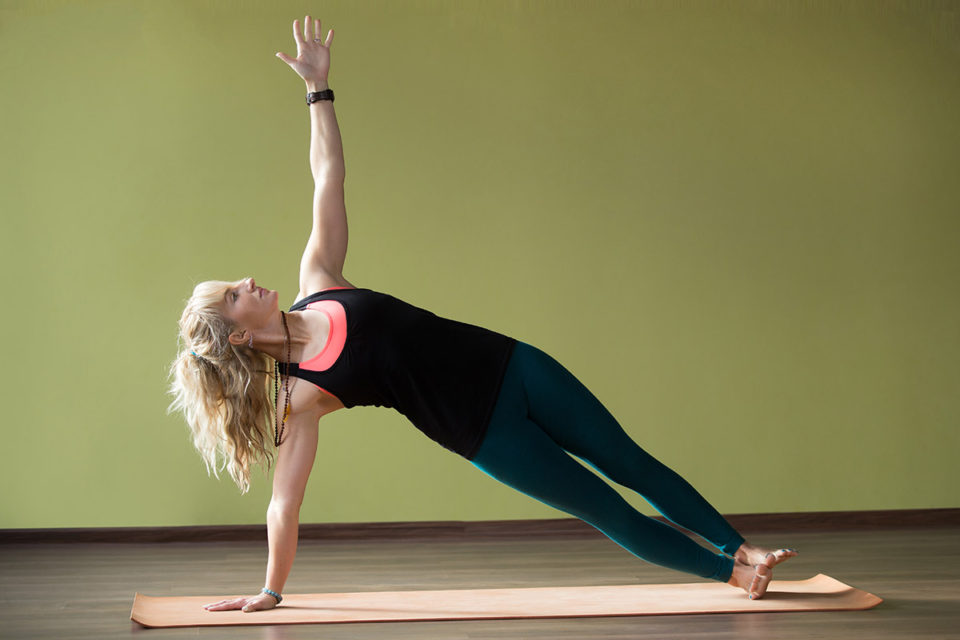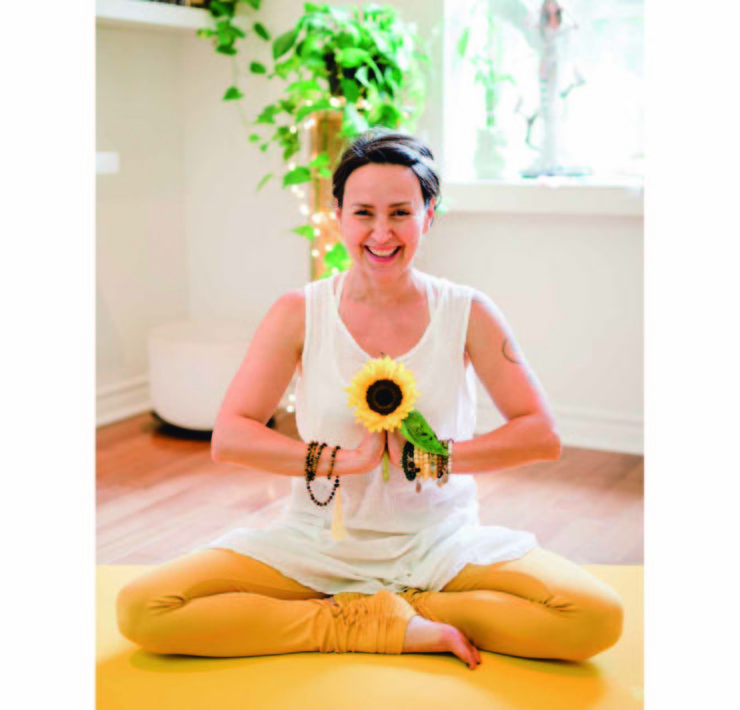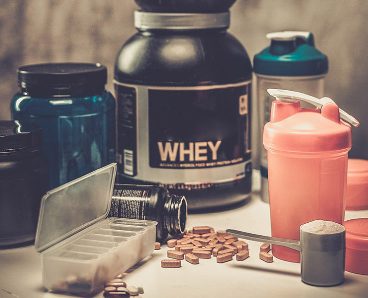Vasisthasana: Side Plank

Sweat Equity Magazine has been the number one source on…
The Sanskrit word “vasistha” has several translations, ranging from “excellence” to “wealth”; but its most important reference is to an important Indian text on yoga and self-inquiry. In modern posture practice, Vasisthasana is valued not only for its strength-building capacity but also for its many variations and modifications, making it suitable for multiple class levels. Whether you’re a beginner looking to modify the posture or a more experienced yogi exploring advanced variations, you can expect to build upper body and core strength, while honing your capacity to balance.
Enter the Pose:
- The simplest way to enter the pose is through Downward Facing Dog. From Dog Pose, come forward into a high push-up position (Plank Pose).
- Bring your right hand towards the centre of the mat, and pivot onto the outer edge of the right foot.
- Raise your left arm towards the ceiling, in line with the supporting arm. Visualize stacking the left shoulder on top of the right.
- Engage your oblique abdominals to lift the hips in line with the spine, lessening the weight on your wrist.
- Strongly activate the legs to support the pose and spread all ten toes to awaken the feet.
- Draw your gaze towards the upper hand.
Dosha-Specific Recommendations:
As the sister science of yoga, Ayurveda works hand-in-hand with postures and other lifestyle recommendations to ensure you receive the maximum benefit from your practice.
Vata:
Strong and grounding yoga postures help to reduce Vata in excess. People with a Vata-dominant constitution will benefit from the metabolic boost, which helps keep the digestive fire strong. Practice long holds in this posture, with a focus on strength and stability.
Pitta:
People with excess Pitta don’t need any help stoking the metabolic fire. However, they can benefit from the heart-opening aspects of the posture and would do well to enjoy simpler and more supported variations of shorter holds.
Kapha:
Kapha-dominant constitutions or excess Kapha can present as lethargy and heaviness. Including Vasisthasana within a sequence of postures boosts energy and self-confidence. Shorter holds in the pose with multiple repetitions will help cultivate a feeling of lightness in mind and body.
Modify:
There are several options for modifying Side Plank. The simplest variations are bringing the lower knee to the mat or the upper foot to the floor in front of your torso.
Advance:
Raise the upper leg parallel to the floor. This works the gluteal muscles on the right and left sides.
Note: People with wrist injuries or carpal tunnel syndrome should avoid weight-bearing postures like Plank and Side Plank. To modify for these issues, practice the postures on your forearms.
What's Your Reaction?
Sweat Equity Magazine has been the number one source on yoga and fitness lifestyle in Canada. SWEAT EQUITY’s mission is to build community that inspires and motivates. Sweat Equity Magazine offers all practitioners—from beginners to masters—expert information on how to live a healthier, happier, more fulfilling life both on and off the mat. We aim to inspire and strengthen your path to enlightenment. The light in me honors the light in you. Namaste.











